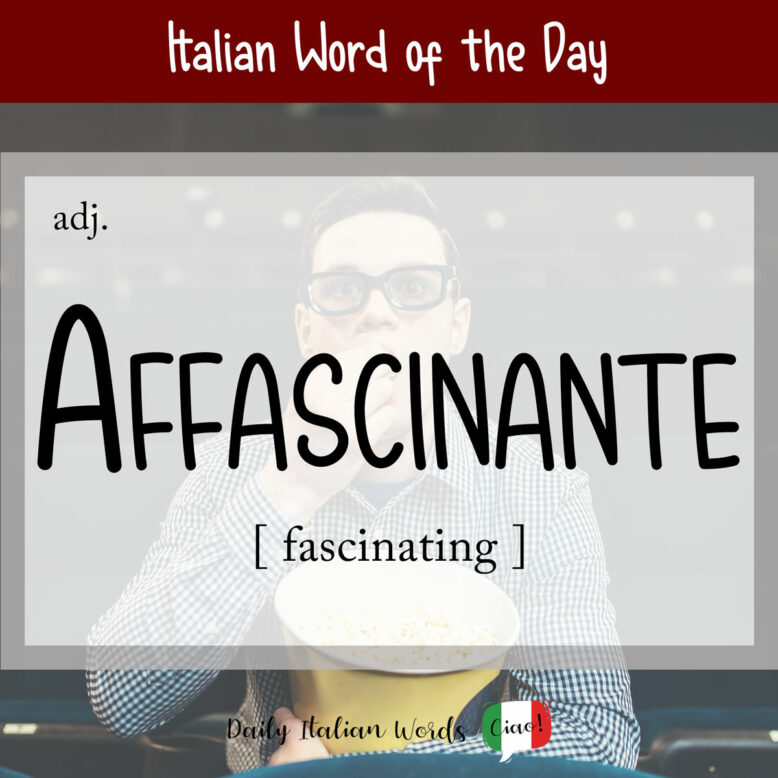The Italian adjective affascinante, which can translate in a number of ways including fascinating and attractive, comes from the verb affascinare meaning to fascinate.

The singular form is always affascinante and the plural form is always affascinanti regardless of the gender of the subject.
When used to describe a person or one of their physical features, the best translation is usually attractive, enchanting or captivating. For example:
- un uomo affascinante = an attractive man
- un sorriso affascinante = a captivating smile
- uno sguardo affascinante = an enchanting look

Guarda quella signora seduta laggiù nell’angolo. Non la trovi affascinante?
Look at that woman sitting over there in the corner. Don’t you find her fascinating?
When used to describe physical or abstract things, the translations fascinating, gripping or riveting tend to work best.
- un progetto affascinante = a fascinating project
- un argomento affascinante = a riveting topic
- una serie affascinante = a gripping series
Ho appena finito di vedere questa nuova serie TV su Netflix. È affascinante. La riguarderò senz’altro.
I just finished watching this new TV series on Netflix. It’s gripping. I’ll definitely watch it again.

Heather Broster is a graduate with honours in linguistics from the University of Western Ontario. She is an aspiring polyglot, proficient in English and Italian, as well as Japanese, Welsh, and French to varying degrees of fluency. Originally from Toronto, Heather has resided in various countries, notably Italy for a period of six years. Her primary focus lies in the fields of language acquisition, education, and bilingual instruction.


